In my first taste of manufacturing, I was parachuted into the Toyota plant at Motomachi, Japan. There, I was instructed to “do Kaizen.” To my senseis, it didn’t matter that I was the only one that spoke English or that this neophyte American was supposed to teach the masters of continuous improvement how to improve their processes. Rather, I observed and walked in their shoes. I discovered and communicated ideas for improving their process. Needless to say, this was a great growth experience and a lesson I was very grateful to learn. This was where I developed the skill of quickly looking at an operation to see how to enhance its pieces without being disruptive to the entire process.
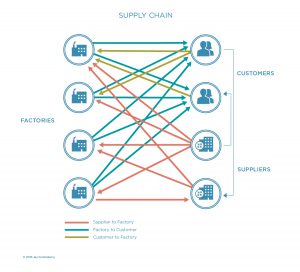
I also learned to factor in the dynamics of a supply chain, many of which are continually changing: suppliers are added, investments are made in new plants, trade regulations grow, logistics cost increase, and customers come and go. Unfortunately, many companies lack the flexibility and agility they need to maintain liquidity through tough economic times. This is often a result of entrepreneurs focusing on their core competencies — designing, marketing and selling their products — while failing to grasp the rest of the supply chain as the company grows.
The increase in international trade and dependence on requiring competencies has meant that the supply chain has become increasingly central to the management of cash.
It is defined as the management of all functions related to the flow of materials from the company’s suppliers to its customers, including purchasing, traffic, production control, manufacturing, inventory control, warehousing and shipping.
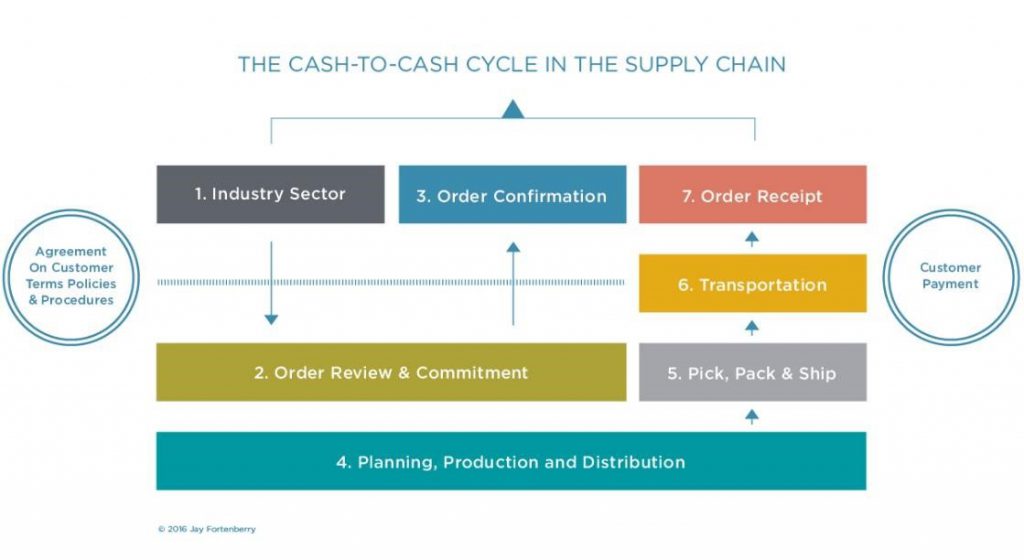
The goal of the supply chain is to reduce the overall cycle time for all products and services. This is achieved by:
- Understanding and analyzing product groups
- Developing a standard approach to cycle time improvement
- Adapting and implementing for each specific supply chain or business
- Pursuing improvements based on effort and impact
- Developing a continuous improvement process that is linked to performance
Cycle Time
Cycle time is the end-to-end total time from when a customer creates demand until a product is delivered and cash collected. This includes all information and material flows, as well as any processing and queuing time. Managing cycle time improvements drives business performance in a number of key areas:
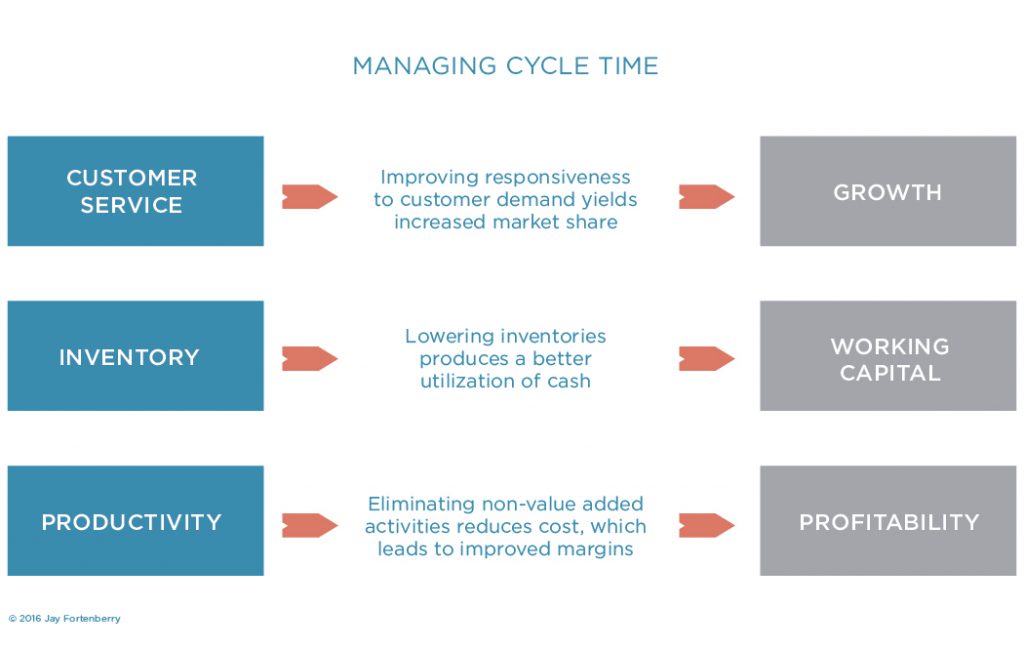
Contrary to a popular myth, inventory is located throughout the entire business, not just in a manufacturing or a distribution center. By managing cycle time, a business brings together all of its processes — from customer service to delivery — in order to direct how its cash is consumed.
The first step of managing cycle time is to locate the value stream of the process. Value streams are where value is added to a product or service. The mapping of a process will assist in seeing where and how processes are completed as well as how money is spent. Reducing cycle time is not always easy, but by developing Value Stream Maps a business can understand the fundamental ways in which the company is run.
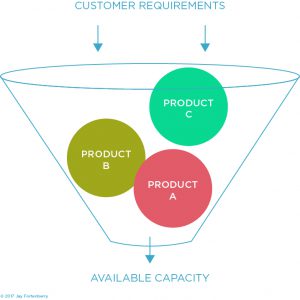 Most supply chain problems are related to the fact that capacity is finite.
Most supply chain problems are related to the fact that capacity is finite.
Many Factors Affecting the Capacity Question
- Manpower – The maximum amount of time available
- Machine Availability – The maximum amount of time that machines can operate
- Size and Volume – Limits to the operating capacity of and/or materials available to machinery
- Budgetary Constraints
- Health and Safety Constraints
- Maintenance Program Constraints
Capacity Planning and Capacity Control
- Load – The amount of work – most often expressed in hours – that must be carried out to meet outstanding orders
- Capacity – The manufacturing capability of a production facility under specified operating conditions
- Output – The rate at which work is completed or taken from a production facility
- Basic Data – Capacity Planning
- Run time – The time needed to perform or run the operation
- Setup time – The time it takes to prepare for the operation
- Conveyance – The time taken to move material from one work center to the next, or from one location to the next
- Queue time – Waiting or sleep time
- Route sheet – Preferred order in which the operations are carried out
Accurate Data is Essential to Decision Making
When it comes to manufacturing there are two different types of planning activities:
- Factory Scheduling – putting in place specific calls of action, to include the tracking of what actually happens, keeping system records accurate, highlighting where the schedule are missed and the rescheduling of production based on changing conditions
- Material Planning – looking out beyond orders, getting the operation ready for what is expected to come
Materials Resource Planning (MRP)
Due to the complexity of most operations, businesses have turned to the use of a Materials Resource Planning (MRP) systems to assist in planning. MRP is simply computer software that assists with the calculations needed to plan manufacturing.
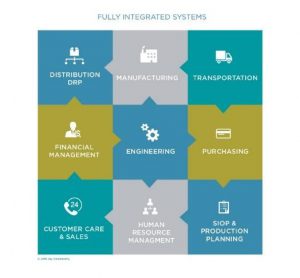
What is MRP?
- Computerized Inventory Control
- Production Planning System
- Management Information System
- Manufacturing Control System
Where Would You Use MRP?
- Job Shop Production
- Complex Products
- Assemble-to-Order Environments
- Discrete and Dependent Demand Items
MRP’s methodology is to:
- Explode the Master Production Schedule
- Use the Bill of Materials (BOM) to identify parts needed
- Check availability of inventory
- Identify when work needs to start in order to ensure that material is available when needed
- Generate works orders and purchase orders
- Repeat the process for other levels of BOM
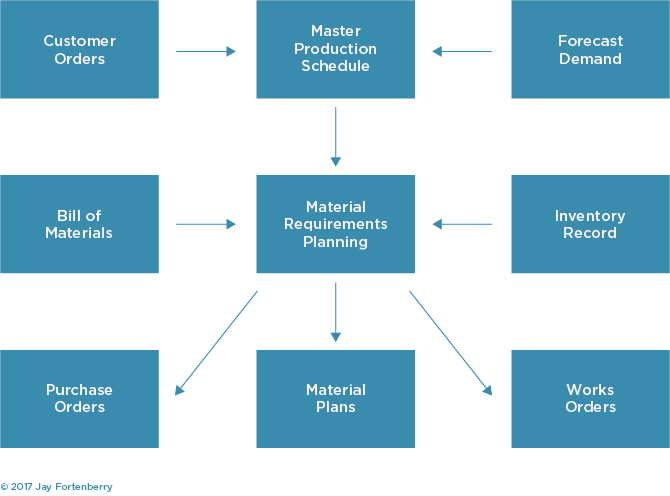
MRP is a tool for understanding the timing of requirements for an item all the way down to the component level. It applies to all levels of the BOM and uses existing inventories to reduce requirements. MRP is based on dependent demand, and allows lead times for ordering, transit and manufacturing to be taken into account.
Key planning actions are:
- Releasing orders
- Rescheduling due dates of existing open orders
- Analyzing and updating system for items such as lot size, lead times etc.
- Reconciling errors
- Taking action on potential problems
- Using the system to solve shortages
- Identifying where improvements are needed
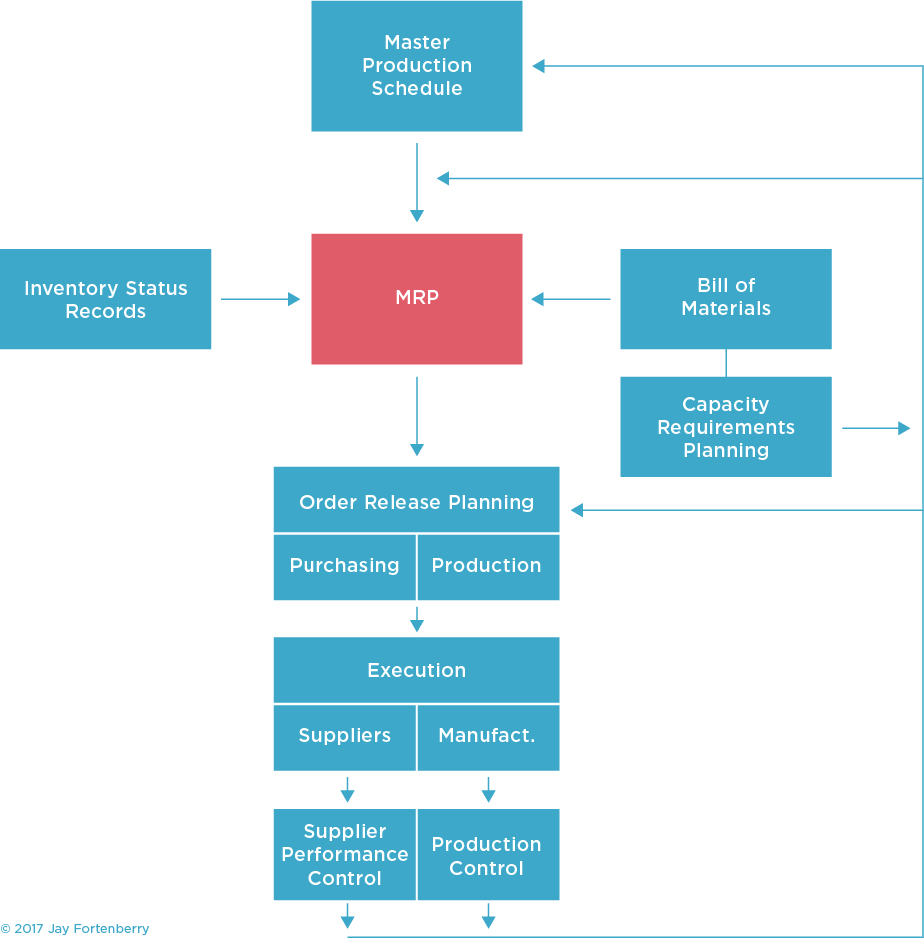
What can MRP do?
- Reduce Purchasing Cost
- Improve Production Schedules
- Reduce Manufacturing Cost
- Reduce Lead Times
- Less Scrap and Rework
- Higher Production Quality
- Improve Communication
- Improve Plant Efficiency
- Reduce Freight Cost
- Reduction in Excess Inventory
- Reduce Inventory Levels
- Reduce Component Shortages
- Improve Shipping Performance
- Improve Customer Service
- Improve Productivity
- Simplified and Accurate Scheduling
- Reduce Overtime
- Improve Supply Schedules
- Improve Calculation of Material Requirements
- Improve Competitive Position
MRP plans production so that the right material is at the right place at the right time.
Inputs and Outputs of MRP
SIOP
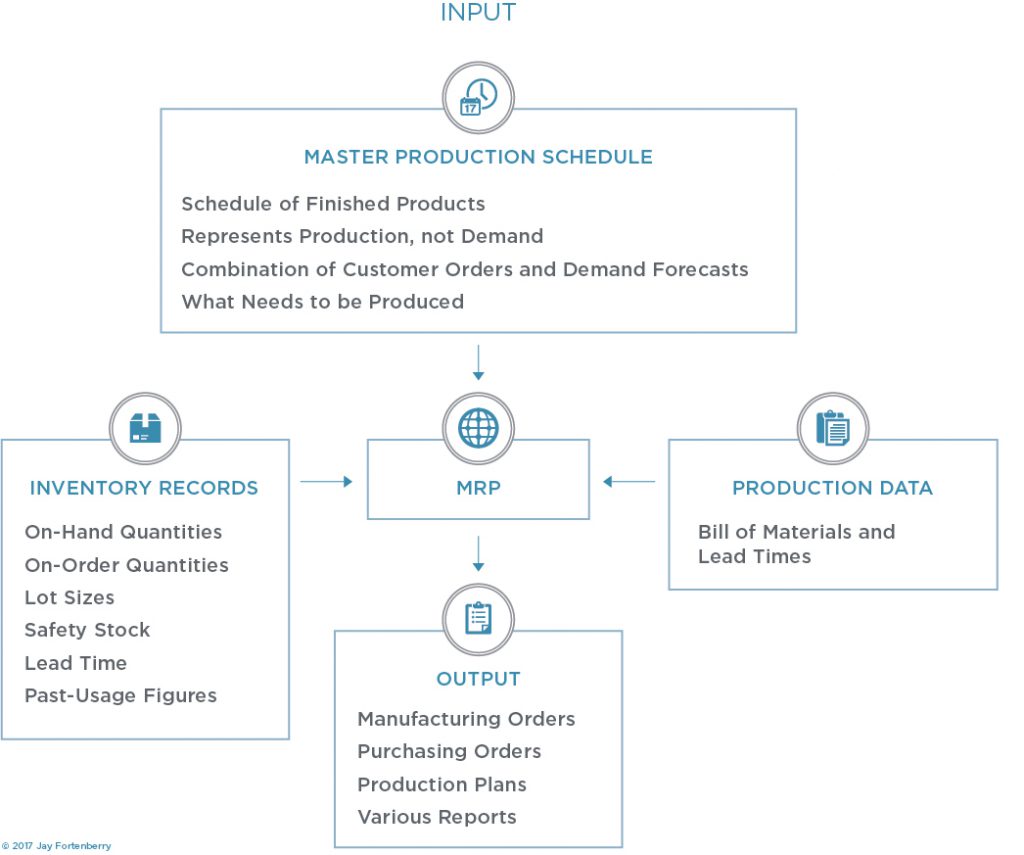
MRP is the backbone of supply planning. It provides:
- Realistic promising, which provides for better customer service
- Controlled reduction of inventories, which reduces the use of working capital
- Improved responsiveness and flexibility through better forward planning
- Enhanced employee involvement through availability of information
- Stronger relationships with suppliers
- Integrated financial management
Data Integrity
- Accurate Inventory Records – 90%
- On Hand
- On Order – Purchase
- On Order – Works
- Accurate Bills of Materials – 98%
- Data
- Structure
- Accurate Item Master – 85%
- Part numbers
- Source – Make / Buy
- Lead times
- Order quantities
- Ordering rules
- Accurate Routings – 99%
- Accurate Standards – 99%
Data accuracy is essential. MRP does not think of or foresee events: it only provides calculations from the data it is fed. It can be a classic case of garbage in/ garbage out if it is not installed and maintained properly.
Manufacturing
Manufacturing has no shortage of inputs
Manufacturing Lead Time is the elapsed time through the manufacturing process, from the time that raw material is dispensed until when the product is available for shipment from the production site. It begins when the manufacturing site receives a signal to produce and ends when finished goods are available for shipment.
Manufacturing has no shortage of inputs, as everyone thinks they are an expert:
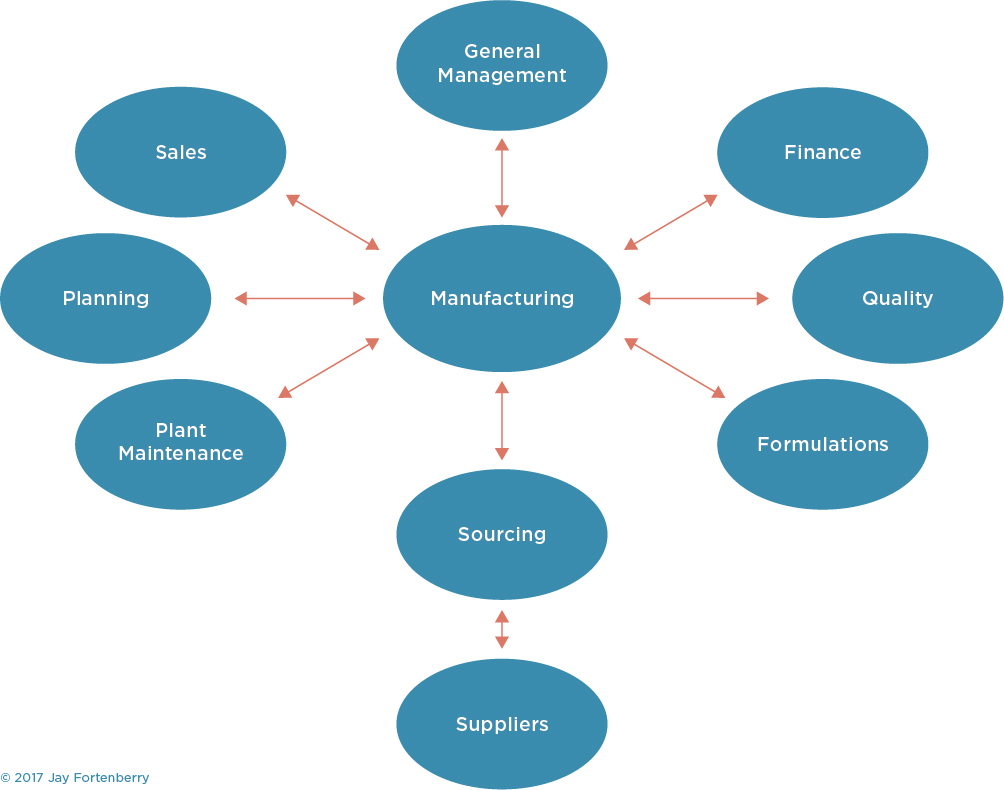
Creating an environment of simplified flows, material availability and schedule stability builds a credible process for customers and employees alike. Understanding the key elements of lead times, quality and costs allows a business to better grasp their response times, take the nervousness out of the system and help the business grow to the desired size.
Particular attention should be paid to where the process pauses and sleeps. In most cases, this is non-value-added time and is typically greater than 50%. This should become the primary target of the manufacturing leaders.

Workflows have to be balanced or the Takt time (the average time between the start of production of one unit and the start of production of the next unit) will increase to the time of the longest work station, thereby creating sleep (or idle) time. These potential bottlenecks rule the throughput and inventory of the overall system, so schedules should be based with all anticipated constraints.
Inputs required for properly balancing a line are:
- Takt time
- The number of stages required
- Variations with task
- Work Station Layout
- Balance flow and not capacity, as capacity can never be really balanced
- Utilization of a non-bottleneck work center should not be determined by its potential but by constraints in the system
- Time lost in a bottleneck is time lost forever: it can never be made up
- Time saved at a bottleneck is an illusion
- Bottlenecks govern both throughput and inventory in the system
- Schedules should be based on a view of all the constraints at any one time, and not based on lead times which arise from schedules that cannot anticipate bottlenecks
- Make to Stock, which uses a Bill of Material (BOM) expressed in end-use part number/catalogue number terms.
- Make to Order, which is based on the customer’s order. Definitions of products are typically completed just prior to production.
- Assemble to Order, which specifies components via a Planning BOM and utilizes inventory buffers. Flexibility is provided through hedging inventory.
- Creating products with value
- Providing input for plant capacity on machine, labor, and suppliers
- Meeting schedule attainment and adherence
- Controlling quality through yield, scrap; includes reworks, reclaims or sorting
- Managing cost per unit and units per hour output
- Supervising raw and WIP inventories including programs for their reduction
- Communication and escalation of issues:
Supplier performance
Quality and productivity issues - How much is needed?
- When is it needed?
- How is it to be triggered?
- And how will it come in?
- Material Planning – looking out beyond orders, getting the operation ready for what is expected to come
- Factory Scheduling – putting specific calls of action that include the tracking of what actually happens, keeping system records accurate, highlighting where the schedules are missed and the rescheduling of production based on changing conditions
- Cost of money
- Warehousing and Handling
- Inventory Losses
- Freight
- Administration
- Insurance
- Pricing
- Productivity
- Warranties
- Liability and insurance
- Intellectual property and branding
- Certifications, qualifications
- Quality
- Tooling
- Liability and indemnification
- A supplier has the right to remove stock from the location at its own discretion as well as to maintain control of stock levels.
- They have the right to physically access and count stocks.
- A supplier may delegate their gatekeeping responsibility to a 3rd party that is under contract, directed, controlled and paid by them.

Therefore, similar to the supply chain outside the four walls of the factory, creating clean flows inside the four walls of a plant is the key to minimizing the overall cycle time, thereby minimizing working capital.
Dr. Eliyahu Goldratt of MIT developed and taught The Theory of Constraints. The Theory of Constraints is:
There are three types of manufacturing:
Manufacturing also plays a key role in:
Materials Management
There has been an endless debate between Sourcing and Materials Management regarding the difference between Buyers’ vs. Planners’ responsibilities.
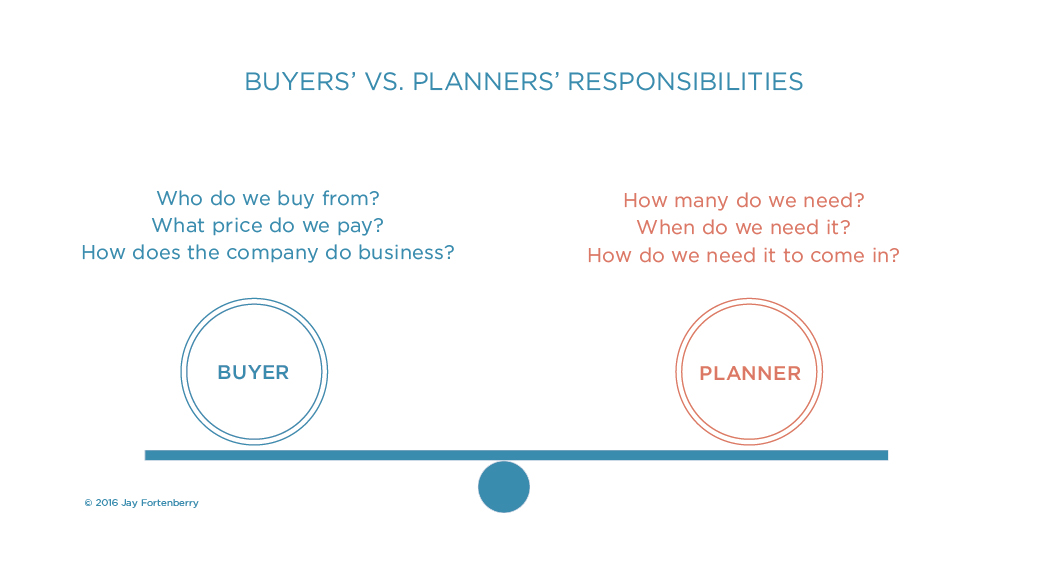
Materials Management is the coordinated effort between planning, sourcing, and suppliers to develop replenishment methods which provide for the highest availability at the lowest cost. The goal is to consistently deliver material while maintaining low inventories.
There are two different types of planning activities when it comes to manufacturing:
The goal is to consistently deliver material availability with low inventories. This is achieved by the use of standard definitions, work and tools through partnerships and clear signals.
Inventory can be reduced by shrinking lead times for raw materials and finished goods, as well as by reducing the uncertainty of demand with customers and/ or suppliers. Typical costs of carrying inventory are 25% to 35%, with some of the components being:
Inventory strategy clearly lays out a process to achieve the targeted results, and can be based on things such as the voice of the customer (VOC), economic conditions or market intelligence.
Inventory is created to compensate for the differences in timing between supply and demand. The costs of not holding inventory can include lost customers, production delays, uneconomical batch sizes and missing supplier volume discounts or price advantages.
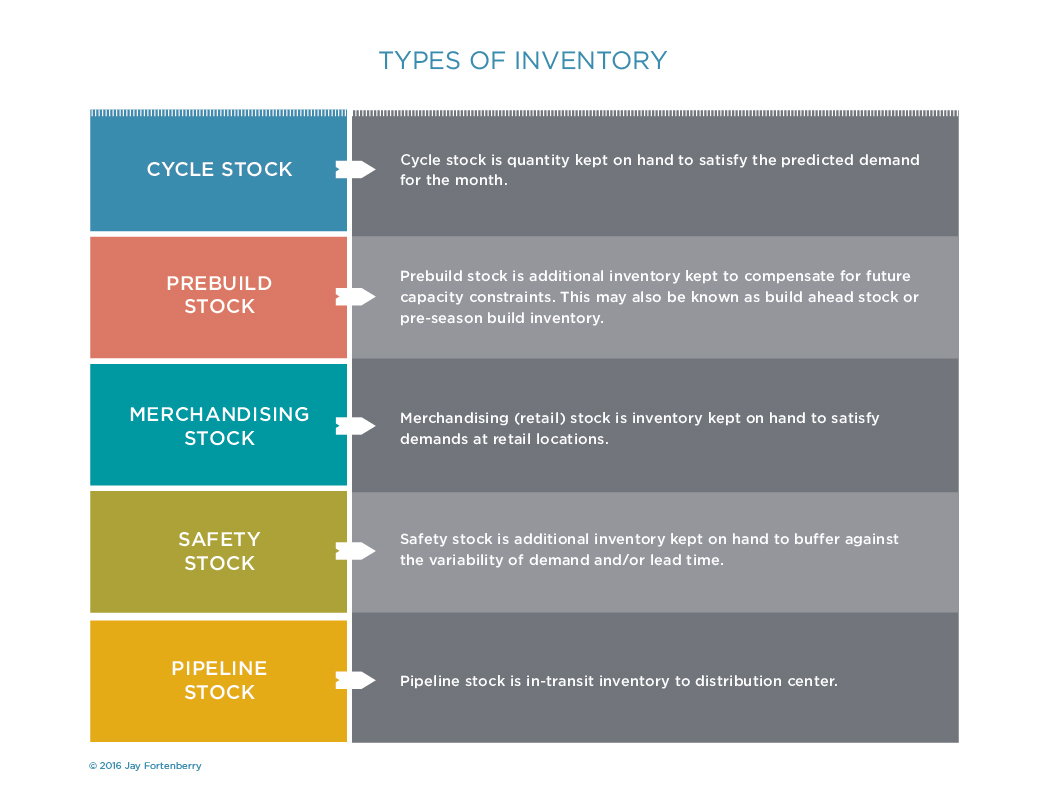
Therefore, the purpose of holding inventory is to maximize service, maintain manufacturing efficiency while minimizing the cost of delivering a product.
Push vs. Pull
In a push system of production planning and control, MRP looks at the schedule to determine what to produce next. Conversely, a pull system such as a Kanban only looks at the next stage of production to determine what is needed – and only produces what is needed. Finally, in a VMI system the buyer of a product withdraws it and pays for it at the time of usage.
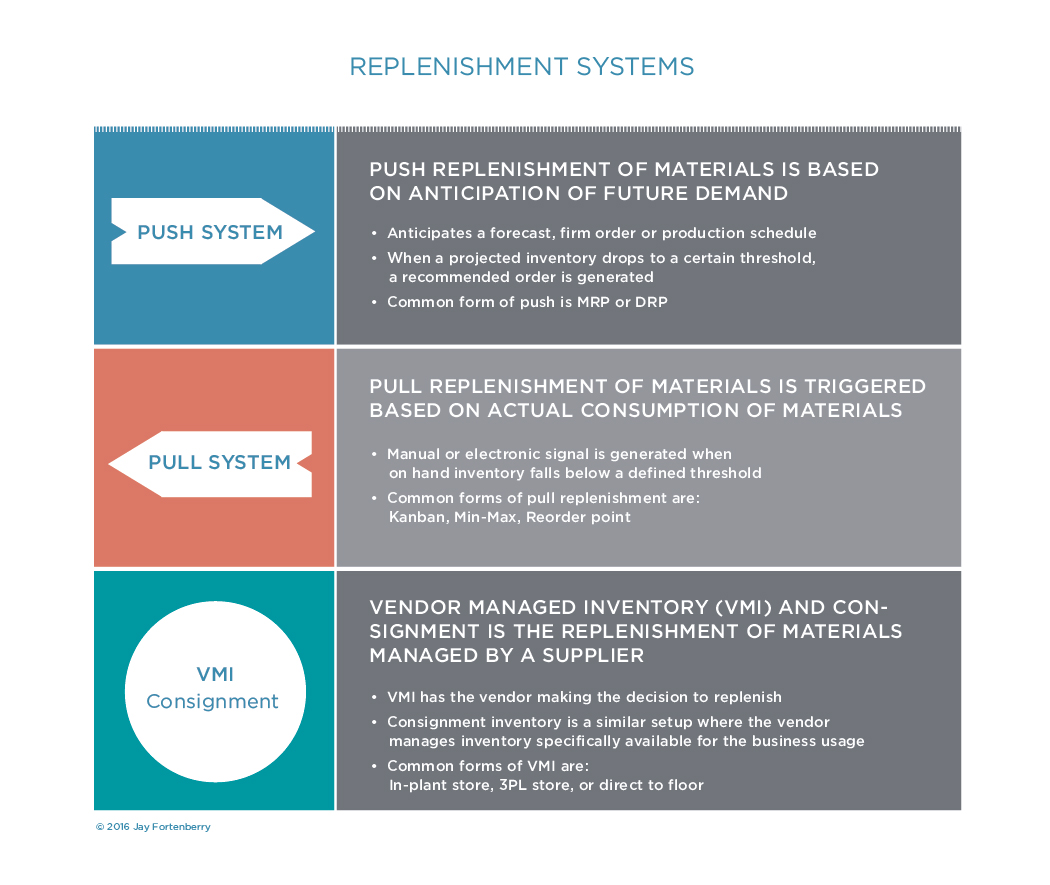
A supplier replenishment agreement is an avenue for working with the supply base in accomplishing inventory management that is a win-win for everyone. This document contains no provisions addressing important commercial terms such as:
Rather, these supplements are an arrangement for how material will flow and can easily be inserted into the verbiage on the Purchase Order (PO).
Finally, for VMI and Consignment Programs, according to generally accepted accounting rules, a supplier has additional rights for both onsite and offsite locations.
While these programs hold the allure of immediate inventory reduction, they can often be fraught with details and extra management. In short, they are not a substitute for doing the work of mapping out your value streams and managing the supply chain properly.
Final Thoughts
It’s been 40 years since I landed in the Toyota plant in Motomachi, Japan. From that experience and the many plants I’ve worked in around the world since, I’ve learned that it’s all basically the same, and plant people are all the same. They love to make things. They have pride in their work and a deep affection for seeing units roll off the line. Whether it’s building hundreds of tractors, hundreds of thousands of cars, or billions of soft gels, capsules and tablets, the success of the process rests on capacity, labor and materials.
In the end, it’s all about how well we grasp the situation and whether we effectively plan and manage our way through it. There are no silver bullets, just good, old-fashioned rolling up your sleeves and getting the job done.
